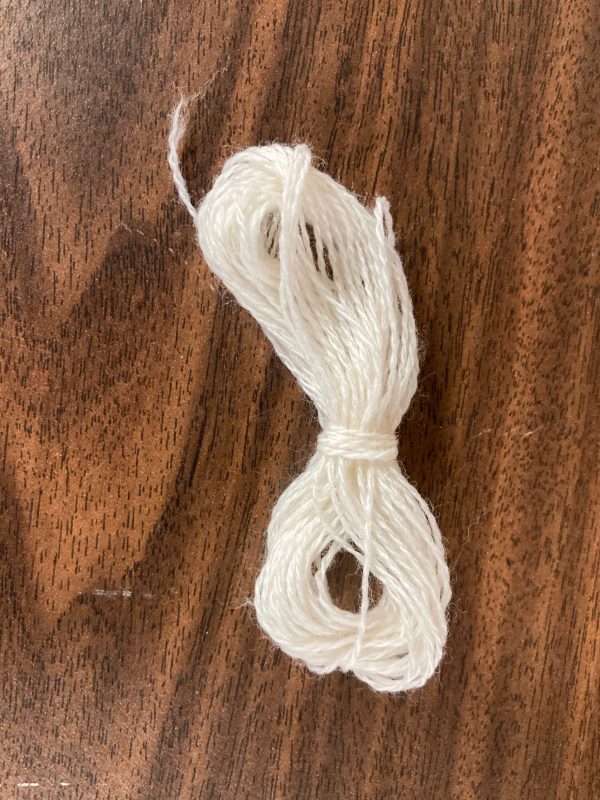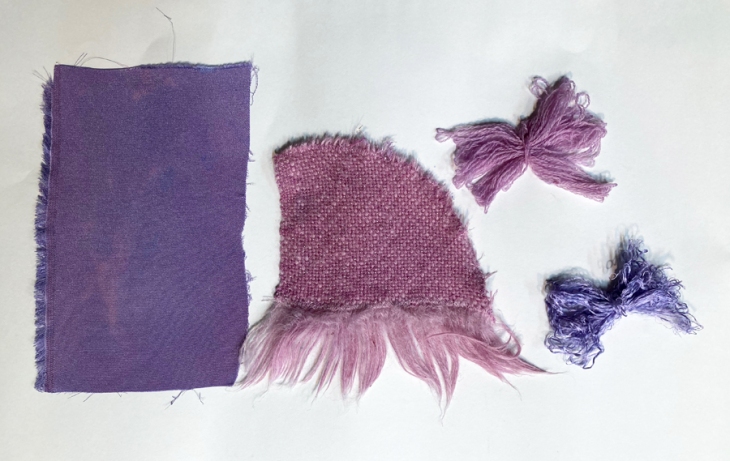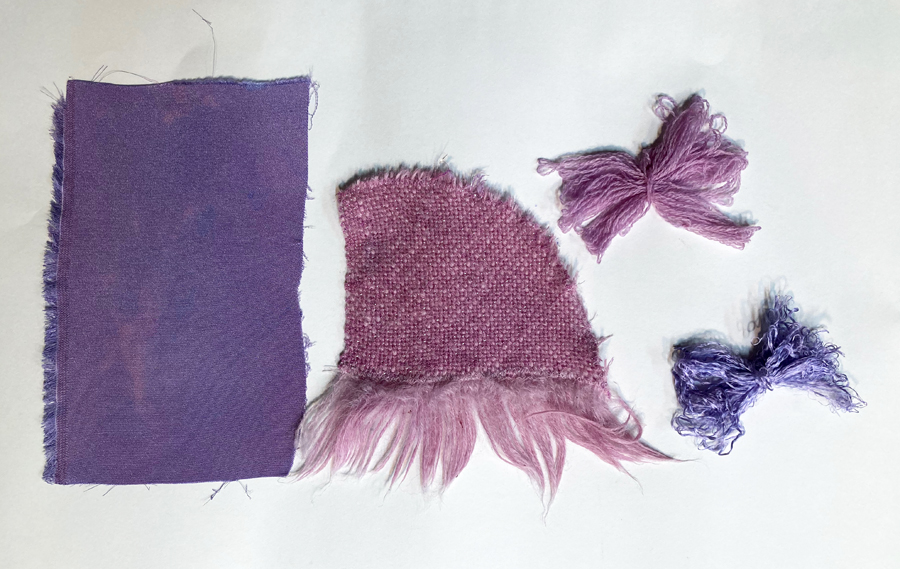Confession: I am not a natural dyer. I tend to be all about speed and convenience, so synthetic dyes and the usual auxilliary chemicals are what I typically go to for quick color on fiber. Yet I truly admire and respect people who study natural dyes; they are so much more nuanced and influenced by mordants, pH, etc. They are more complicated and require much more study and experimentation.
Recently when I harvested some carrots from my garden that I had planted from a mix of colored-carrot seeds, I was surprised and pleased to get a rainbow variety of shades: white, yellow, orange, red and purple. I sliced and grated them for soup and salad and noticed that the purple carrots are almost midnight black all the way through and they stain my fingers when I handle them. By contrast, the red carrots have a thin red skin and ordinary orange flesh inside.

A rainbow of carrot colors. 
The purple carrots have dark purple skin and flesh. 
The dark flecks in the carrot bread are purple carrots.
It turns out that purple is the default carrot color; the orange variety was developed later. The plant was originally grown for its seeds and leaves, and later on for the tap root we consider an essential kitchen vegetable. How wonderful that we are now re-discovering the original colors.
The dark purple carrots in my garden got me wondering if I could dye with them, so I performed a very unscientific and non-reproducible experiment. I made a couple of butterflies of wool and silk yarn and cut a couple of scraps of fabric. One is a commercial silk crepe and one a fragment of my handwoven alpaca and wool crepe with a silver metallic ply. I grated and chopped a few small purple carrots and put them in a pot with water, white vinegar and potassium alum. I did not measure anything! I brought it all to a simmer, submerged my yarn and fabric samples and let it cook for about 30 minutes, then took it off the heat and let cool to room temperature.

A butterfly of merino wool yarn. 
Scrap of handwoven alpaca and wool crepe yarn.
After dyeing, the water in the pot, as well as the leftover carrot debris, was still very dark purple. This rather surprised me, as my purple beans turn green when I cook them. Presumably the purple carrots retain some anthocyanin nutrition after cooking.
I rinsed the fabric and yarn samples and picked out carrot bits, then hung them up to dry. I ironed the fabric pieces and fluffed the yarn and found it curious that the silk absorbed more color than the wool, and the silk tends to be a bluer color, while the wool is a redder, pink color. It’s just chemistry, I guess! I don’t know yet if the colors will be light- and wash-fast, but these samples are unlikely to see much daylight.

Adding grated carrots to the dye pot before cooking. 
L to R: Silk crepe, handwoven alpaca and wool crepe, wool and silk yarns.
I did a little research on using natural dyestuff from the garden, and found that the ratio of plant matter to yarn varies from 2:1 to 4:1. That means you might have to use up to 4 pounds of plant matter to dye one pound of yarn or fabric. My garden is so small, I don’t think I would be willing to sacrifice that much food to make dye! It was fun to experiment, but I don’t think I am ready to call myself a natural dyer yet.


